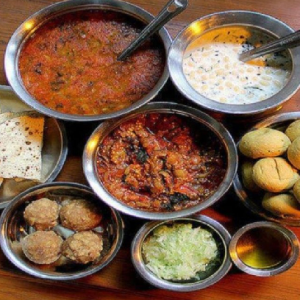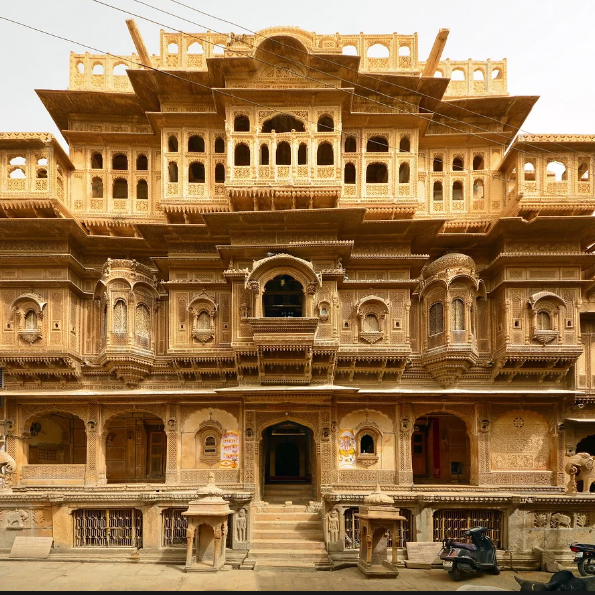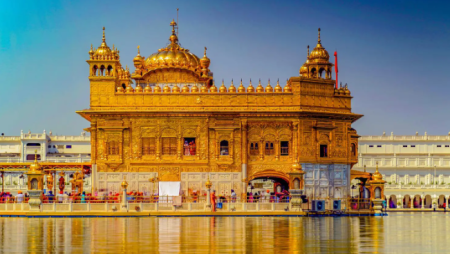Discovering the Architectural Heritage of Jaisalmer: Nathmalji ki Haveli

Nathmalji ki Haveli
Built: 19th century
Style: Blend of Arabic and Rajput architecture
Key Features:
- Elaborate sandstone carvings depicting mythological scenes, floral motifs, and animals
- Intricate jharokhas (balconies) with intricate latticework
- A large central courtyard surrounded by rooms and galleries
- High ceilings with painted domes and arches
- A small temple dedicated to Lord Krishna
Architectural Significance:
Nathmalji ki Haveli is a testament to the architectural prowess of the 19th century artisans of Jaisalmer. It showcases a harmonious blend of Arabic and Rajput architectural styles, creating a captivating visual spectacle. The intricate carvings, jharokhas, and painted domes are exceptional examples of the region’s artistic inheritance. rooms are arranged around the courtyard and decorated with painted walls and ceilings.
- Balconies: The upper floors feature numerous balconies and jharokhas (projecting windows), overlooking the courtyard and streets.
- Arabic Influence: The influence of Arabic architecture is evident in the use of pointed arches, horseshoe arches, and Islamic-style carvings.
- Rajput Influence: Rajput architectural elements include the heavy stone columns, brackets, and chhatris (small pavilions on roofs).
History:
Built in the 19th century, Nathmalji ki Haveli was the residence of a wealthy Jain merchant named Nathmalji. The haveli served as a trading center and became a gathering place for merchants and social elites.
Today, Nathmalji ki Haveli is one of Jaisalmer’s most iconic architectural landmarks and is protected as a UNESCO World Heritage Site. It continues to fascinate visitors with its exquisite craftsmanship and unique architectural fusio








